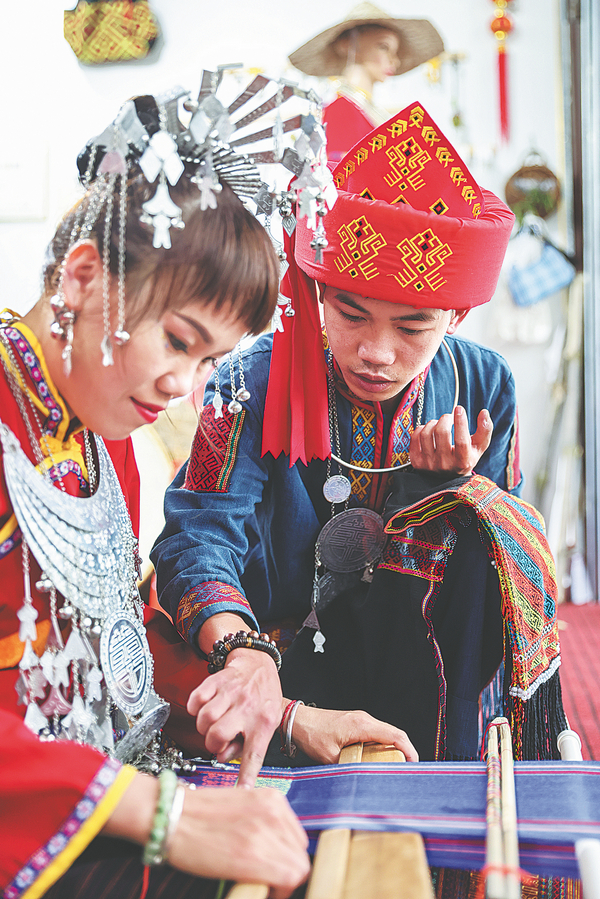

HAIKOU-During this year's Spring Festival holiday, Huang Yangwei's mother and elder sister were dressed in new clothes with an ethnic brocade he had woven for them.
"It's just beautiful," says Huang's sister. "I love it."
Huang, 24, is a native of Maodao township in Wuzhishan county, South China's Hainan province. Born into a family of the Li ethnic group, he was immersed in Li culture as a child, especially the ethnic brocade, which is famous for its bright, striking colors. But he had no idea how to weave it.
"My parents are lifetime farmers, and no one in the family really knew much about weaving the brocade," he says.
Huang did not know much about craftsmanship until he was in high school, when local authorities organized an event to introduce intangible cultural heritage to the school campus in 2016.
"I was fascinated instantly," he says.
Since then, he fell in love with Li brocade and became the only boy in his home village who can weave it.
"I developed a genuine and abiding love for the ethnic craft, but some villagers cannot understand why a man is addicted to weaving," he says. "They think it's a girl's thing." Undeterred, Huang continued chasing after his weaving dream.
The intangible cultural heritage of Li brocade can be traced back more than 3,000 years. In line with Li tradition, the weaving techniques are only "passed on to women, not to men", as in ancient China, men were supposed to do farm work while women were supposed to weave.
In recent years, Hainan education authorities have introduced the traditional craft in local schools, so that the younger generation can understand and learn about the ethnic culture.
When Huang learned of the ancient craftsmanship in high school, he started weaving almost immediately.
"I gave my first handmade brocade piece to my mentor to express my gratitude for her guidance. It meant a lot to me," says Huang.